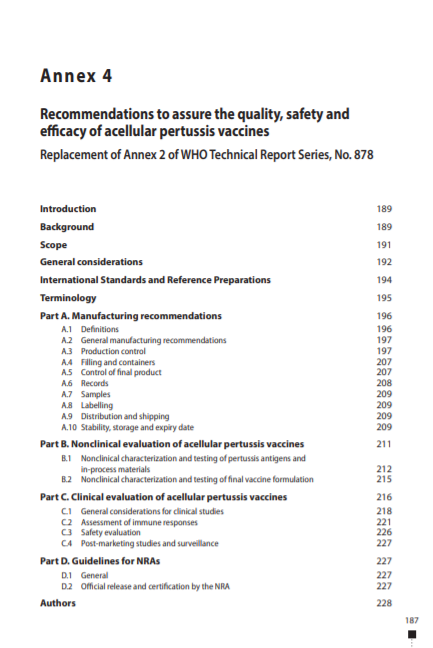Recommendations to assure the quality, safety and efficacy of acellular pertussis vaccines, Annex 4, TRS No 979
Replacement of Annex 2 of WHO TRS No 878

Overview
As a consequence of the increasing demand for acellular pertussis vaccines, new manufacturers are entering the field. The expansion in the number and use of acellular pertussis vaccines, the development of new vaccines and advances in the standardization of qualitycontrol methods have prompted WHO to update its current Guidelines for acellular pertussis vaccines (2).
These Guidelines were approved in 1996, with the recognition that further improvements in the production and evaluation of these vaccines would follow. Since then, stakeholders have gained additional experience with these vaccines, and limitations in the original Guidelines have been identified (3–7). Acellular pertussis vaccines are almost exclusively administered in combinations with diphtheria and tetanus toxoid vaccines. Moreover, in recent years there has been increased interest in the use of more complex combination vaccines – a trend which increases the challenges of clinical evaluation. Furthermore, the evaluation of the clinical efficacy of any new acellular pertussis vaccine formulations has become increasingly difficult due to the decrease in the prevalence of pertussis cases worldwide and for additional reasons discussed below in Part C. The goal of this revision is to address these issues concerning the Guidelines in the light of new information.
Full version of the WHO Technical Report Series N° 979
